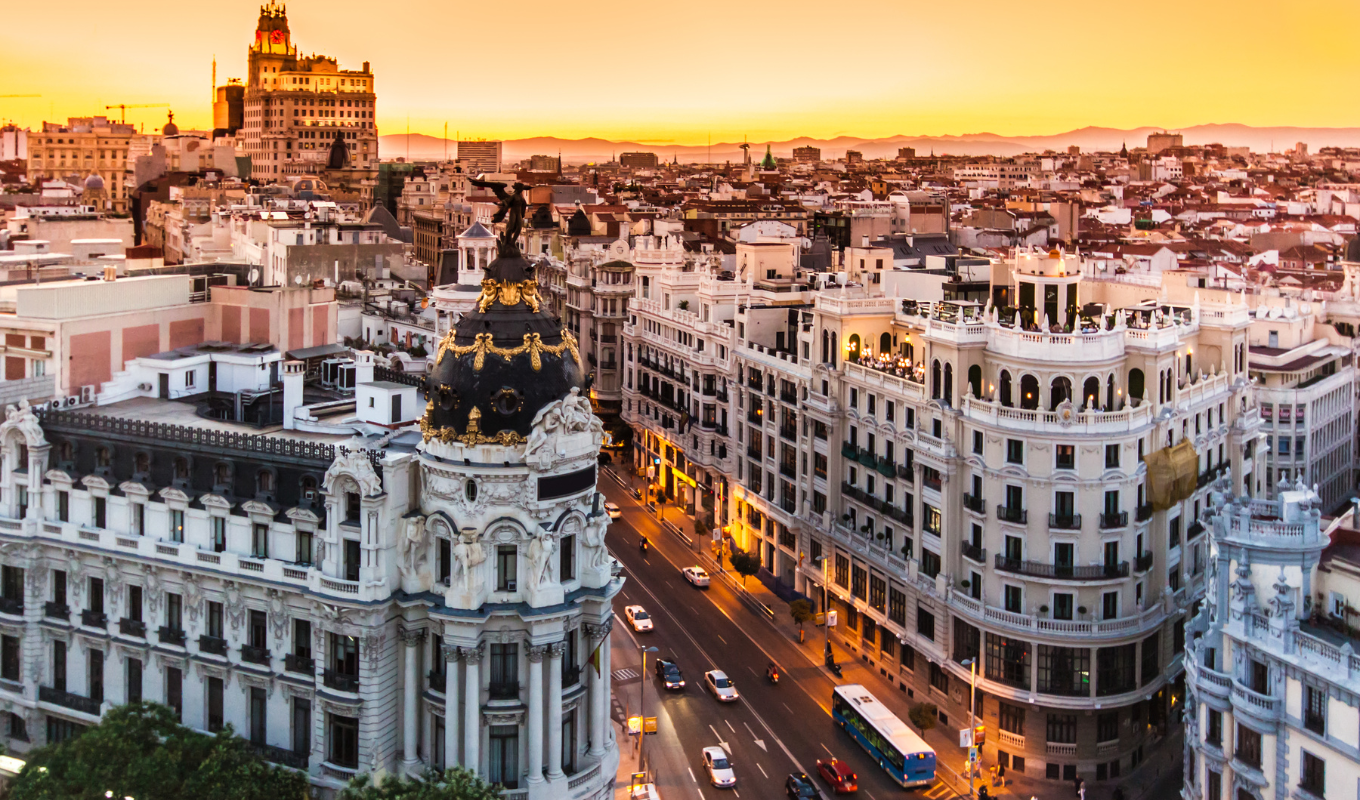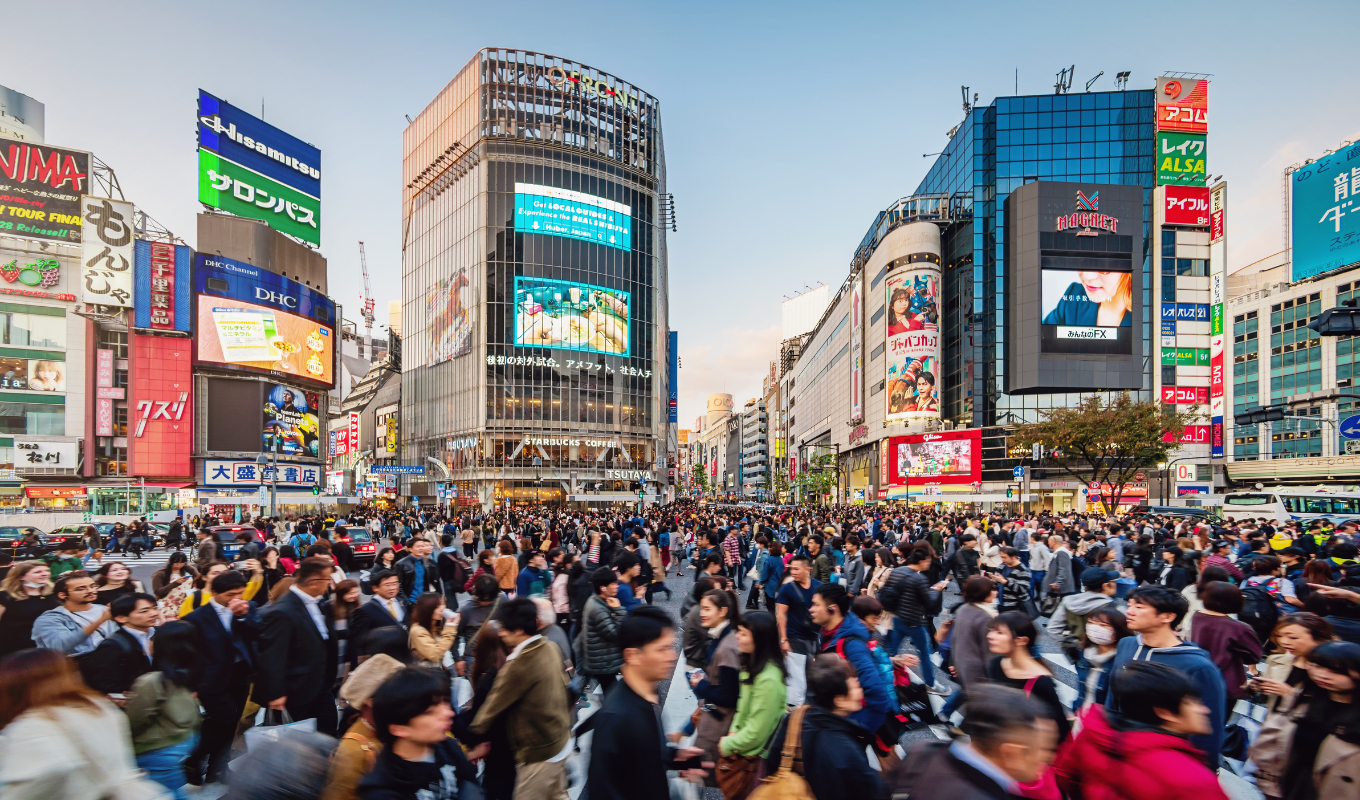Madrid is a city that blends royal history with a modern urban vibe, offering something for every traveler. From world-class museums like the Prado and Reina Sofía to lively neighborhoods and delicious local cuisine, Spain’s capital is full of unforgettable experiences. Whether you’re strolling through Retiro Park, enjoying tapas in La Latina, or planning a day trip to Toledo, this guide has you covered.
Key Highlights:
- Best Time to Visit: Late spring (April–May) and early fall (September–October) for mild weather and fewer crowds.
- Budget Tips: Daily expenses range from $60–80 (budget) to $250–400+ (luxury). Save with free museum hours, lunch specials, and metro passes.
- Top Attractions: Prado Museum, Royal Palace, Retiro Park, Plaza Mayor, and the Temple of Debod.
- Getting Around: Use Madrid’s efficient metro system, with tickets starting at $1.50. Taxis and bike-sharing are also great options.
- Day Trips: Toledo and Segovia are must-visit historic cities, both under an hour from Madrid by train.
Madrid offers a mix of art, food, history, and vibrant neighborhoods, making it a destination worth exploring at your own pace.

Planning Your Madrid Trip
Good planning can turn your Madrid adventure into something unforgettable.
When to Visit Madrid
Madrid’s climate offers something unique every season. In spring (March to May), temperatures hover between 60–75°F, making it ideal for strolling through the city and dining outdoors as Madrid shakes off the winter chill. Summer (June to August) is hot, with highs often surpassing 85°F and even hitting over 100°F in July. While summer draws crowds, August feels quieter since many locals leave for vacation, giving the city a more laid-back vibe. Fall (September to November) brings a return to comfortable temperatures (60–75°F), perfect for exploring museums and parks. Winter (December to February) is cooler, with averages around 40–55°F. It’s a quieter time to visit, with fewer crowds at indoor attractions and lower hotel prices – a chance to see Madrid the way locals do.
For the best mix of pleasant weather and affordability, late spring (April–May) and early fall (September–October) are great times to visit.
Trip Budget Breakdown
Knowing what to expect for daily expenses can help you plan your Madrid trip more effectively. Here’s a rough guide for American travelers:
- Budget Travelers: Plan for $60–80 per day. This includes a stay in hostels or budget hotels ($25–40), casual meals or some self-catering ($20–25), public transportation ($8–10), and a mix of free or low-cost attractions ($5–15).
- Mid-Range Travelers: Expect to spend $120–180 daily. This budget covers a three-star or boutique hotel ($60–90), dining at traditional restaurants or tapas bars ($35–50), occasional taxis, and tickets to several paid attractions ($15–20).
- Luxury Travelers: Allocate $250–400+ per day. This budget includes upscale accommodations in prime locations ($150–250), fine dining ($70–100), premium transportation options, and exclusive cultural experiences.
To save, take advantage of free museum hours and opt for lunch menus, which are typically 30–40% cheaper than dinner.
Finding Flights to Madrid
Scoring affordable flights to Madrid requires flexibility and timing. January is often the cheapest month to fly from the U.S. to Spain , with direct flights from major cities like New York, Miami, and Los Angeles taking about 7 hours and 45 minutes.
Use flight comparison tools like Skyscanner to check prices across hundreds of providers. Set up price alerts to track fare changes and get notified when prices drop. Being flexible with your travel dates and considering nearby airports can also unlock significant savings.
For deeper discounts, consider joining services like Dollar Flight Club. They specialize in deals like flash sales, error fares, and major price drops – sometimes cutting up to 90% off regular prices. Their Premium+ plan ($99/year) includes SMS alerts and access to mistake fares that can save you hundreds. For instance, round-trip flights to Madrid sometimes drop to $300–500 instead of the usual $700–1,200. These deals often appear during late-night or early-morning airline system updates, so acting quickly is key. Keep your passport and payment details ready to snag these fleeting offers.
Next, we’ll look at the best ways to get around Madrid once you arrive.

Getting Around Madrid
Exploring Madrid is straightforward and affordable, thanks to its compact layout and well-connected transportation system. Whether you’re arriving from the airport or navigating the city itself, there are plenty of options to suit your needs.
Airport to City Center
Adolfo Suárez Madrid-Barajas Airport, located about 8 miles northeast of the city, offers several ways to reach the heart of Madrid:
- Metro Line 8: This direct metro line connects the airport to the city center. Tickets cost $1.50–$2.00, plus a $3.00 airport surcharge. The trip takes about 30–40 minutes, with stops at key stations like Nuevos Ministerios and Colombia. Trains run every 5–7 minutes from 6:00 AM to 1:30 AM.
- Express Bus 203: A budget-friendly option, this bus runs 24/7 between the airport and Atocha train station. Tickets cost around $5.00, and the journey takes 40–60 minutes, depending on traffic. Major stops include Cibeles and O’Donnell, with buses arriving every 15–20 minutes during peak times.
- Taxis: For a more comfortable ride, taxis charge a flat rate of roughly $30 to destinations within the M-30 ring road. The trip usually takes 20–30 minutes but may be longer during rush hour. Ride-sharing services like Uber and Cabify offer similar pricing, generally ranging from $25–40.
Madrid Public Transportation
Madrid’s public transit system is one of the most efficient in Europe, offering an extensive metro, bus, and train network that makes it easy to get around.
- Metro: With 13 lines and 302 stations, the metro covers nearly every corner of the city. Single tickets cost $1.50–$2.00, and most tourist attractions are within Zone A. For unlimited travel, the Tourist Travel Pass is a great option, starting at $8.40 for 1 day and going up to $35.40 for 7 days. The metro operates from 6:00 AM to 1:30 AM Sunday through Thursday, with extended hours until 2:30 AM on Fridays and Saturdays. Trains arrive every 2–3 minutes during peak hours (7:30–9:30 AM and 6:30–8:30 PM) and every 5–7 minutes during off-peak times.
- Buses: Madrid’s bus network includes over 200 routes, complementing the metro system. Tickets are interchangeable with the metro, and night buses (búhos) run from 11:45 PM to 5:50 AM when the metro is closed.
- Cercanías Trains: These regional trains connect local neighborhoods and nearby towns. If you have a Tourist Travel Pass, travel within Zone A is included.
For easy navigation, apps like Metro de Madrid or Google Maps (with offline downloads) are helpful, especially when you’re underground.
Other Ways to Get Around
Madrid is a pedestrian-friendly city, and walking is often the best way to soak up its charm. Iconic landmarks like Puerta del Sol, Plaza Mayor, and the Royal Palace are within a half-square-mile radius. The city’s famed Art Walk (Paseo del Arte) links major museums – the Prado, Reina Sofía, and Thyssen-Bornemisza – just 15 minutes apart on foot. During the summer, aim for early morning or evening strolls when temperatures are cooler.
For short trips, taxis are convenient. Base fares start at about $2.50, with an additional $1.10 per kilometer, making most rides between tourist spots cost $8–15. Madrid’s white taxis, marked with a red diagonal stripe, accept both cash and credit cards. Ride-sharing services like Uber, Cabify, and Bolt are also available, offering upfront pricing, though costs can rise by 20–50% during peak times or bad weather.
If you’re looking for eco-friendly options, try BiciMAD, Madrid’s bike-sharing program. Annual subscriptions cost around $25, or you can pay $2 for 30 minutes, with an extra $0.50 for each additional half-hour. Electric scooters from providers like Lime and Tier are another option, costing about $1 to unlock and $0.20 per minute – perfect for short neighborhood hops.
For trips beyond the city center, ride-sharing services can save time. For example, a ride from central Madrid to neighborhoods like Malasaña or Chueca typically costs $6–$10, offering a quicker alternative to public transit.

Where to Stay in Madrid
Finding the right neighborhood can make your visit to Madrid even more memorable. While the city’s compact layout ensures you’re never too far from its major attractions, each area has its own vibe and perks, catering to different travel styles. Here’s a guide to help you choose the perfect spot, building on earlier tips to ensure a smooth Madrid experience.
Best Areas for First-Time Visitors
Sol and Gran Vía
This central district is perfect for first-timers who want to be in the thick of the action. With landmarks like the Royal Palace and Plaza Mayor just a short walk away, you’ll also find plenty of restaurants, shops, and theaters nearby. However, be prepared for some noise, especially on weekends when the area buzzes with activity.
Barrio de los Austrias
Steeped in history, this charming quarter is known for its cobblestone streets, traditional tapas bars, and stunning architecture. Close to major sites like the Royal Palace, it offers a quieter, more refined atmosphere in the evenings, making it a great choice for those seeking a peaceful stay.
La Latina
If you’re after authentic local flavor, La Latina won’t disappoint. Its narrow medieval streets, lively markets – like the Sunday flea market – and family-run eateries create a bohemian vibe. This neighborhood is a foodie’s dream, offering a genuine taste of Madrid’s culture.
Malasaña
This trendy area is famous for its indie boutiques, vintage shops, and vibrant nightlife. With its artistic roots and youthful energy, it’s ideal for travelers who enjoy a lively atmosphere. Just keep in mind that it might not be the best choice if you’re a light sleeper.
Salamanca
For those looking to indulge, Salamanca is the place to be. Known for its upscale shopping, fine dining, and designer boutiques, this district exudes sophistication. Its elegant streets and excellent public transport connections make it a top pick for a luxurious stay.
Chueca
Chueca combines a central location with a friendly, inclusive vibe. Centered around a lively plaza, it offers a mix of traditional Spanish culture and modern amenities. With its cozy wine bars, diverse restaurants, and proximity to key attractions, it’s a fantastic option for a well-rounded experience.
Hotel and Lodging Options
Luxury Hotels
Madrid’s luxury hotels offer a mix of historic elegance and modern design, delivering top-tier experiences in prime locations.
Mid-Range Hotels
Mid-range options strike a balance between comfort and value. Many include perks like rooftop terraces, fitness centers, and complimentary breakfasts, all while keeping you close to the city’s main sights.
Budget Hotels and Hostels
For travelers on a budget, Madrid has plenty of affordable choices, from private rooms to shared dorms. These options often come with a touch of the city’s historic charm.
Vacation Rentals
Perfect for families or longer stays, vacation rentals provide a home-away-from-home feel. Many come with full kitchens and living spaces, giving you the chance to experience Madrid like a local.
Boutique Properties
Boutique hotels stand out for their unique designs and intimate settings. Often featuring local art and curated details, they offer a personalized touch that enhances your stay.
Keep in mind that accommodation prices can fluctuate depending on the season, so plan accordingly.

Top Madrid Attractions
Madrid blends timeless charm with a lively urban vibe, offering a mix of art, history, and vibrant city experiences. Whether you’re a first-time visitor or a seasoned traveler, this city has plenty to explore.
Museums and Historic Sites
The Prado Museum is a treasure trove of masterpieces by Velázquez, Goya, and El Greco, making it one of the most renowned art collections in the world. To save time, book your tickets online and skip the long lines.
The Royal Palace is a stunning display of imperial grandeur. From its ornate throne room to the impressive armory and frescoed ceilings, the palace offers a glimpse into royal life. Although only a portion is open to the public, the rich interiors and beautifully manicured gardens make it a must-visit. Audio guides are available in multiple languages to enhance your tour.
For fans of modern art, the Reina Sofía Museum is a highlight. Housing iconic works like Picasso’s Guernica and pieces by Dalí and Miró, the museum offers a deep dive into Spain’s 20th-century art scene. Visiting during evening hours adds a unique ambiance to the experience.
The Almudena Cathedral is a fascinating mix of neoclassical architecture and a more contemporary interior. Don’t miss the museum and dome, which offer panoramic views of Madrid – a rewarding stop for any visitor.
Once you’ve explored these cultural gems, step outside to discover Madrid’s beautiful parks.
Parks and Green Spaces
Parque del Retiro is Madrid’s beloved urban retreat. With its landscaped gardens, winding paths, and serene lakes, it’s the perfect spot for a relaxing stroll or a casual picnic. Within the park, the Crystal Palace, a stunning glass structure, often hosts art exhibitions and offers a peaceful setting for people-watching.
For something unique, visit the Temple of Debod, an ancient Egyptian temple gifted to Spain. This historic site becomes especially magical at sunset, with its reflection shimmering in the surrounding pools.
If you’re looking for a wilder escape, Casa de Campo is Madrid’s largest green space. The Teleférico, a cable car ride, provides sweeping aerial views and drops you off near hiking trails, picnic spots, and even the Madrid Zoo. It’s also a great place to catch a breathtaking sunset.
After exploring these outdoor havens, dive into the lively atmosphere of Madrid’s historic plazas.
Main Plazas and Squares
Plaza Mayor is the historic heart of Madrid, showcasing centuries of tradition with its striking architecture. Once used for royal ceremonies and public events, today it’s a vibrant square filled with cafes and shops. The Casa de la Panadería, adorned with colorful frescoes, doubles as a visitor information center. During the holiday season, the plaza transforms into a festive market brimming with seasonal charm.
Puerta del Sol is not just a bustling plaza but also the literal center of Spain, marked as Kilometer Zero of the country’s road network. Iconic landmarks like a famous neon sign and the Bear and the Strawberry Tree sculpture make it a popular photo spot. On New Year’s Eve, the plaza buzzes with excitement as locals follow the tradition of eating 12 grapes at midnight. Its central location and metro connections make it a convenient starting point for exploring the city.
Plaza de Cibeles is a showstopper with its grand Cibeles Palace and the iconic Cibeles Fountain. This plaza often becomes the center of celebrations, especially after major sports victories. Its architectural beauty and vibrant energy make it a must-see landmark in Madrid.
Madrid’s rich mix of culture, art, and lively public spaces ensures there’s always something to discover.

Madrid Food and Drink Guide
Madrid’s food culture is a reflection of its vibrant lifestyle – meals here follow a later schedule compared to the U.S. This unique rhythm is part of what makes the city so captivating, combining deep-rooted traditions with a lively, modern vibe. Below, you’ll find tips on meal timings, must-try dishes, and the best places to eat in Madrid.
Spanish Meal Times Explained
In Madrid, locals follow a dining schedule that’s distinctively their own. Breakfast is typically light, often just coffee with a pastry. Lunch, the main meal of the day, happens much later than in the U.S., usually around 2 or 3 p.m., and is often a hearty, multi-course affair. Dinner doesn’t start until 9 or 10 p.m., making evenings in Madrid feel long and sociable.
Local Dishes and Drinks to Try
Madrid offers an array of dishes that showcase its culinary heritage. From the rich and comforting cocido madrileño (a traditional chickpea stew) to the crispy and indulgent churros con chocolate, there’s something for every palate. Don’t miss out on callos a la madrileña (Madrid-style tripe) or the iconic bocadillo de calamares (fried calamari sandwich). Pair your meal with a glass of tinto de verano or a refreshing cerveza for the full experience.
Where to Eat in Madrid
Madrid’s dining scene caters to every preference and budget. For a casual bite, head to a bustling tapas bar like El Tigre or Casa Revuelta. If you’re in the mood for fine dining, restaurants like DiverXO or Ramon Freixa Madrid offer unforgettable culinary experiences. For a mix of tradition and modern flair, visit Sobrino de Botín, the world’s oldest restaurant, or explore the lively food stalls at Mercado de San Miguel.

Day Trips from Madrid
Madrid’s central location makes it an ideal starting point for quick escapes to nearby historic cities filled with medieval charm, Roman engineering, and royal grandeur.
Toledo and Segovia
Toledo, located about 44 miles (70 km) south of Madrid, feels like walking into a history book. Known as the “City of Three Cultures”, this UNESCO World Heritage site reflects a unique blend of Christian, Muslim, and Jewish influences. You can reach Toledo in just 33 minutes via high-speed train from Madrid’s Atocha station, with tickets ranging from $13 to $20.
Begin your visit at the stunning Toledo Cathedral, a masterpiece of Gothic architecture that took over 250 years to complete. Inside, you’ll find works by El Greco, who famously called Toledo home. Next, head to the Alcázar of Toledo, perched above the Tagus River, offering breathtaking views and housing a military museum. Be sure to wander through the Jewish Quarter, where narrow cobblestone streets lead you to the Synagogue of Santa María la Blanca and charming marzipan shops.
Plan to spend 6–8 hours in Toledo. The last train back to Atocha typically leaves around 9:30 p.m.
For another captivating experience, Segovia is just as accessible and offers its own treasures of Roman and royal history.
Located 56 miles (90 km) northwest of Madrid, Segovia is home to one of the world’s most impressive Roman aqueducts. Stretching over 2,388 feet, this marvel of engineering was constructed without mortar and stands as a testament to ancient ingenuity. A high-speed train from Madrid’s Chamartín station will get you to Segovia in about 30 minutes, with tickets costing $12 to $18.
The Alcázar of Segovia, perched dramatically on a rocky hill, features royal apartments, a throne room, and an armory. Fun fact: this castle is said to have inspired Disney’s Sleeping Beauty castle. Don’t miss the Segovia Cathedral, often called the “Lady of Cathedrals”, which is the last grand Gothic cathedral built in Spain.
Segovia is perfect for a half-day (4–5 hours) or a full-day trip. While you’re there, treat yourself to the local specialty, cochinillo asado (roast suckling pig), at iconic restaurants like Cándido, which has been serving this dish since 1786.
Other Day Trip Options
If you’re looking for a quieter, more relaxed outing, consider these additional destinations.
El Escorial, a massive complex combining a monastery, royal palace, and mausoleum, is located 31 miles (50 km) northwest of Madrid. Commissioned by King Philip II in the 16th century, this UNESCO World Heritage site stands as a symbol of Spanish power and devotion. The Royal Monastery of San Lorenzo de El Escorial is home to a library with over 40,000 books and manuscripts, as well as works by Velázquez and El Greco.
You can reach El Escorial in about an hour by bus (Lines 661 or 664 from Madrid’s Moncloa station) for $4–6. Set aside 3–4 hours to explore the royal apartments, the basilica, and the king’s pantheon.
Another option is Ávila, located 70 miles (112 km) northwest of Madrid. This city is famed for its remarkably preserved medieval walls, which stretch 1.5 miles around the old city, complete with 88 towers and 9 gates. Ávila is also the birthplace of Saint Teresa of Ávila, and you can visit the Convent of Saint Teresa, built on the site of her childhood home.
A train ride from Chamartín station to Ávila takes about 1.5 hours and costs $15–25. The city’s medieval walls are especially stunning at sunset, making Ávila a great choice for a half-day trip or even a longer stay.
Both El Escorial and Ávila offer a more tranquil experience compared to the bustling streets of Toledo and Segovia, making them ideal for travelers seeking peace and a slower pace.

Madrid Travel Tips
These practical tips will help you navigate Madrid like a local while ensuring a safe and enjoyable experience.
Local Customs and Manners
Madrid operates on a rhythm that might feel unfamiliar if you’re visiting from the U.S. Siesta hours are a prime example – many smaller shops, businesses, and restaurants close between 2:00 p.m. and 5:00 p.m. for an afternoon break. Plan your schedule around these hours to avoid surprises.
Meals in Spain also follow a later timeline. Lunch typically starts around 2:00 p.m., while dinner often doesn’t begin until 9:00 p.m. If you’re looking for an authentic dining experience, you’ll find most Spanish restaurants open for dinner only after 9:00 p.m.
When it comes to tipping, Madrid’s customs are much more modest than in the U.S. A tip of 5-10% is considered generous at restaurants, though locals often just round up the bill or leave small change. At bars and cafés, leaving a few coins is perfectly fine.
Madrid leans toward a more formal dress code, especially in churches, upscale restaurants, and cultural sites. Avoid wearing shorts, flip-flops, or athletic wear in these settings. For instance, churches like the Almudena Cathedral require visitors to cover their shoulders and knees.
For greetings, expect two light cheek kisses (starting with the right cheek) among friends and acquaintances. However, a handshake is more appropriate for business or formal introductions. Maintaining eye contact during greetings is considered polite and respectful.
Language Tips
While Madrid is welcoming to international visitors, Spanish is the primary language in most settings. Picking up a few basic phrases can go a long way in making connections and showing respect for the local culture.
Here are some useful phrases:
- “¡Hola!” (OH-lah) – Hello
- “Por favor” (por fah-VOR) – Please
- “Gracias” (GRAH-see-ahs) – Thank you
- “¿Habla inglés?” (AH-blah in-GLAYS) – Do you speak English?
- “Disculpe” (dis-KOOL-peh) – Excuse me/Sorry
- “No hablo español muy bien” (no AH-bloh es-pahn-YOHL mwee bee-EN) – I don’t speak Spanish very well
In tourist-heavy areas like Gran Vía, Sol, and Malasaña, English is widely spoken, especially in hotels, restaurants, and museums. At popular spots like the Prado, Reina Sofía, and Thyssen, staff often speak English, and you’ll find English-language guides readily available.
However, as you venture into traditional neighborhoods, local markets, or family-run establishments, English becomes less common. Taxi drivers, particularly older ones, may not speak much English. To avoid confusion, write down your destination or use a translation app.
Menus in tourist areas often include English translations, but at more authentic eateries, you might only find Spanish menus. Learning a few food-related words, such as “pollo” (chicken), “pescado” (fish), “verduras” (vegetables), or “sin carne” (without meat), can make ordering much easier.
Safety and Common Scams
Madrid is generally a safe city for tourists, but like any major destination, it’s important to stay alert, particularly in crowded areas where pickpocketing is common.
Pickpocketing hotspots include the Metro, especially during rush hours, as well as Puerta del Sol, Gran Vía, and the area around Atocha Station. Keep your belongings close, and avoid displaying valuables like jewelry, electronics, or large amounts of cash.
Some common scams to watch out for include:
- “Gold ring” scam: Scammers near Retiro Park and other tourist areas may offer to sell you a “gold ring” while an accomplice attempts to pickpocket you.
- Fake petitions: Near sites like the Prado Museum or Plaza Mayor, scammers may ask you to sign a petition and then demand money or use the distraction to steal from you. Politely decline and move on.
- Restaurant bill padding: In tourist-heavy areas, some restaurants might add charges for bread, olives, or service you didn’t request. Always review your bill carefully.
- ATM skimming: When withdrawing cash, use ATMs inside banks, cover your PIN, and check for anything unusual on the machine.
- Taxi overcharging: Some drivers may claim their meter is broken or take unnecessarily long routes. Insist on using the meter and check your route on a map app. Licensed taxis in Madrid are white with a red diagonal stripe.
For emergencies, dial 112 for general assistance, 091 for the national police, and 092 for local police. The Tourist Police station at Calle de Leganitos, 19, near Plaza de España, has multilingual staff ready to help visitors.

Conclusion
Madrid welcomes first-time visitors with a mix of world-class art, lively neighborhoods, delicious cuisine, and deep-rooted traditions that make it one of Europe’s most enticing destinations. Whether you’re marveling at the masterpieces in the Prado Museum and Reina Sofía, indulging in tapas in La Latina, or wandering through the serene paths of Retiro Park, the city offers something for everyone.
Take your time to embrace Madrid’s laid-back vibe by immersing yourself in its local customs. Slow down and enjoy the city’s rhythm – whether it’s admiring the historic architecture of Plaza Mayor, browsing for vintage treasures in Malasaña, or taking a quick day trip to the historic town of Toledo.
Travelers can make the most of their budget with smart choices like free museum hours, cost-effective Metro passes, and menú del día deals at local restaurants. While spring and fall bring mild weather, Madrid’s cozy tapas bars and engaging indoor attractions make it a great destination no matter the season.
As you plan your visit, remember to venture off the beaten path. Some of the most unforgettable moments in Madrid happen when you stumble across a neighborhood festival, discover a tucked-away plaza, or share a conversation with a friendly local over coffee. With these tips, you’re ready to explore Madrid with confidence and create memories that will last a lifetime.
And if you’re dreaming of Madrid, Dollar Flight Club can help make it happen with exclusive discounts – offering up to 90% off flights to this vibrant Spanish capital.
FAQs
What are some smart ways to save money while visiting Madrid?
To make the most of your budget while exploring Madrid, consider investing in the Abono Transporte card. This card gives you unlimited access to public transportation for 30 days at a flat rate – much more affordable than purchasing individual tickets for every trip.
When it comes to meals, keep an eye out for the ‘menú del día’ at local restaurants. This daily menu typically includes a full lunch at a fraction of the cost of ordering items à la carte. It’s a fantastic way to enjoy a hearty meal without overspending.
Exploring central Madrid on foot is not only free but also one of the best ways to soak in the city’s charm. Plus, many of Madrid’s top museums offer free or discounted entry during specific days or hours, so plan your visits accordingly.
For dining on a budget, food markets, small tapas bars, and even popular chains like Cien Montaditos are great options. If you’re looking to save even more, consider shopping at supermarkets for snacks or simple meals – you’ll still get a taste of Madrid’s flavors without breaking the bank.
What are the best ways to enjoy a weekend trip to Madrid?
To make the most of a weekend in Madrid, focus on the city’s must-see spots. Start with iconic landmarks like the Royal Palace, a stunning symbol of Spanish heritage, the world-famous Prado Museum for art enthusiasts, and the serene Retiro Park, perfect for a leisurely escape from the city’s buzz. These locations offer a blend of history, culture, and relaxation.
Wander through lively neighborhoods such as Sol and Malasaña, where you’ll find a mix of local charm, trendy cafes, and vibrant street life. Food lovers shouldn’t miss Mercado de San Miguel, a foodie paradise where you can indulge in authentic Spanish dishes like jamón ibérico, croquetas, and fresh seafood.
Getting around is a breeze with Madrid’s reliable metro system, which is both time-saving and budget-friendly. For those looking to keep costs low, the city offers plenty of free or inexpensive activities, like exploring its parks or browsing local markets. Just remember to check opening hours and embrace local customs to ensure a smooth and enjoyable visit.
What dining customs should I know to enjoy an authentic Madrid experience?
When dining in Madrid, start with a warm “Hola” to greet your server, and don’t forget a kind “Gracias” when your food or drinks are served. Meals in Spain are a relaxed affair, so there’s no rush – savor the experience. Before diving into your meal, it’s customary to wait for someone at the table to say “Buen provecho” (enjoy your meal).
Another tip for dining etiquette: keep your hands visible on the table instead of resting them in your lap, as it’s considered polite. While tipping isn’t required, leaving 5-10% for excellent service is always appreciated. Embracing these small gestures not only shows respect for local customs but also makes your meal feel more connected to the culture.










